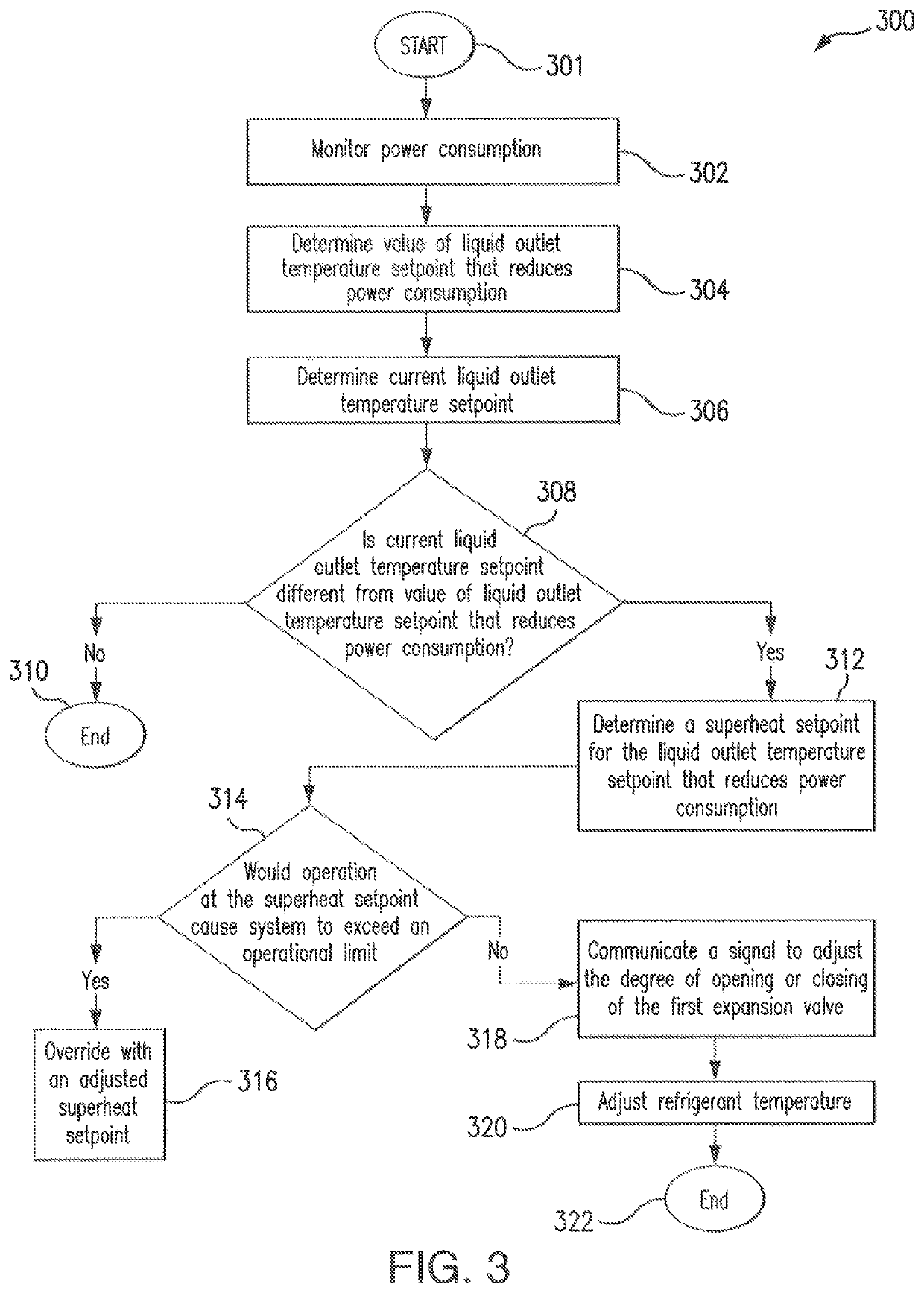Self-optimizing subcooler control
a subcooler and self-optimization technology, applied in the field of climate control systems, can solve the problems of reducing the capacity of the evaporator, and reducing the efficiency of the system, so as to reduce the efficiency, the effect of reducing the return and reducing the efficiency
- Summary
- Abstract
- Description
- Claims
- Application Information
AI Technical Summary
Benefits of technology
Problems solved by technology
Method used
Image
Examples
Embodiment Construction
[0019]Embodiments of the present disclosure and its advantages are best understood by referring to FIGS. 1 through 7 of the drawings, like numerals being used for like and corresponding parts of the various drawings.
[0020]Generally, a refrigeration cycle includes circulating refrigerant though one or more refrigeration components, including at least one compressor, a heat exchanger (e.g., a condenser), at least one valve, and one or more evaporators. To ensure the system operates as intended, each system requires sufficient power, which may vary based on the refrigeration load. The present disclosure contemplates a system and method for efficiency operating a refrigeration system.
[0021]For example, FIG. 1 illustrates a conventional refrigeration system. The refrigeration system of FIG. 1 includes tank 102, first expansion valve 104, subcooler 106, first path 108, second path 110, compressor path expansion valve 112, second expansion valve 114, evaporator 116, compressor 118, and con...
PUM
 Login to View More
Login to View More Abstract
Description
Claims
Application Information
 Login to View More
Login to View More - R&D
- Intellectual Property
- Life Sciences
- Materials
- Tech Scout
- Unparalleled Data Quality
- Higher Quality Content
- 60% Fewer Hallucinations
Browse by: Latest US Patents, China's latest patents, Technical Efficacy Thesaurus, Application Domain, Technology Topic, Popular Technical Reports.
© 2025 PatSnap. All rights reserved.Legal|Privacy policy|Modern Slavery Act Transparency Statement|Sitemap|About US| Contact US: help@patsnap.com



